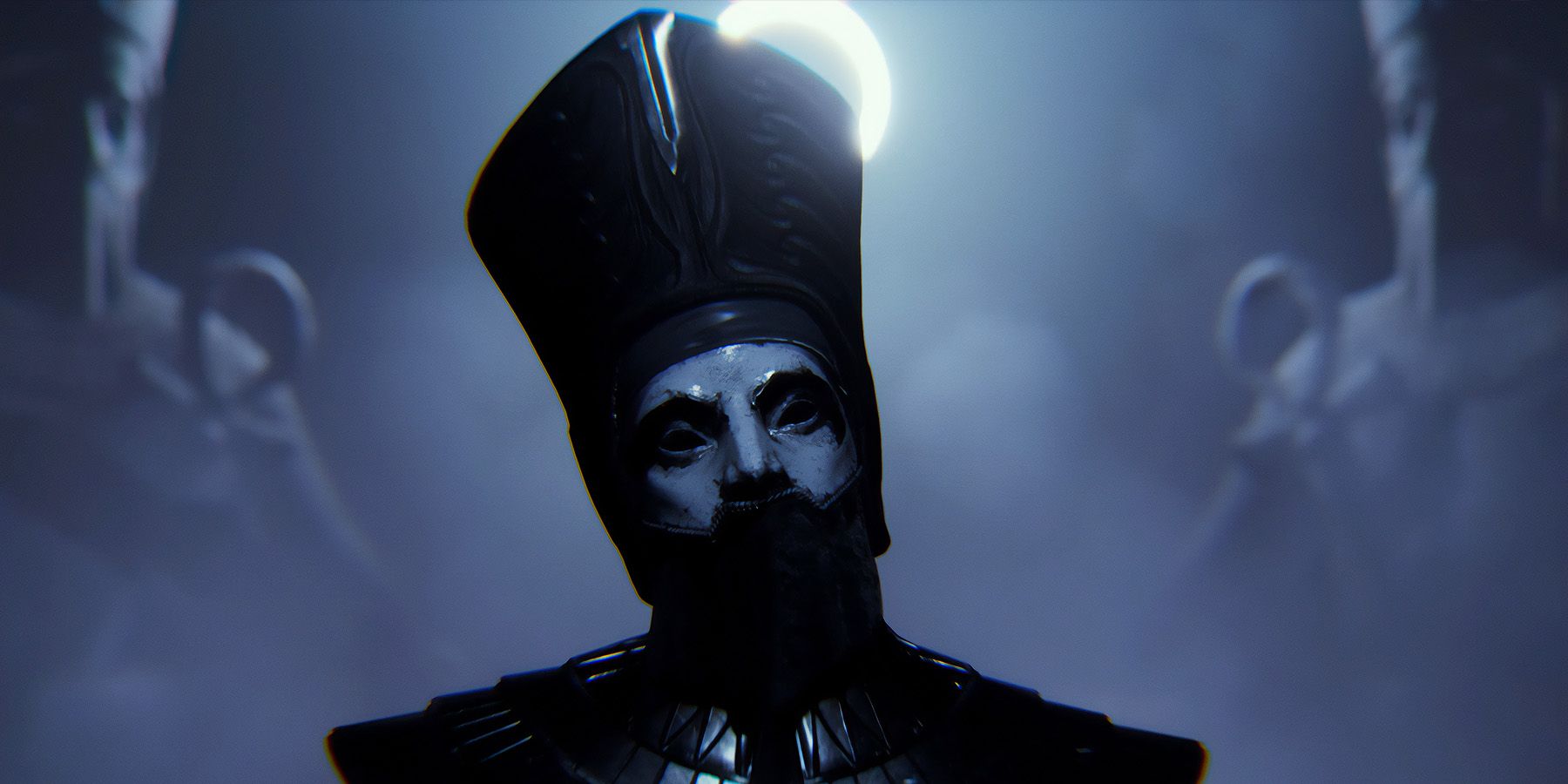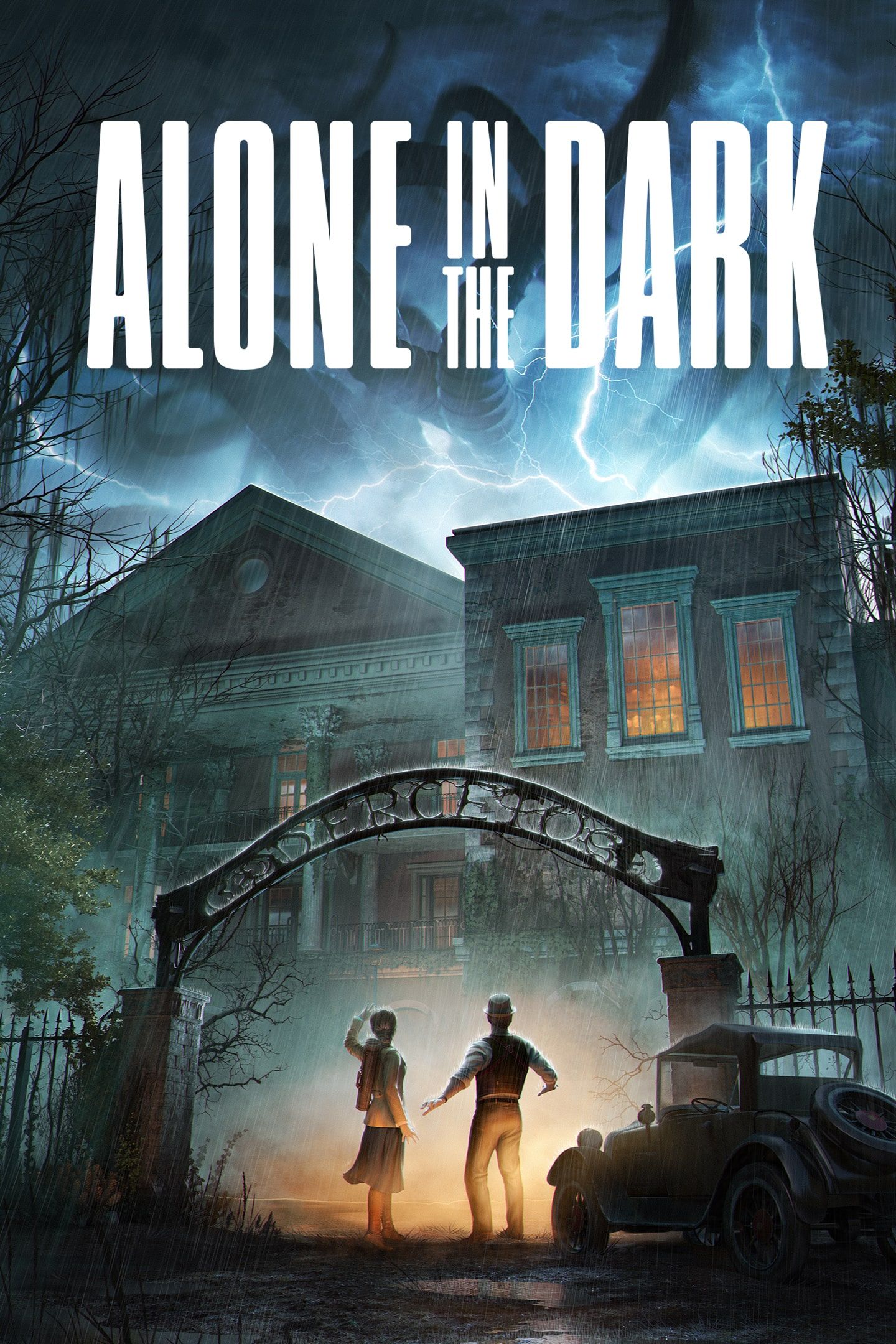Resident Evil is synonymous with the survival horror genre today, having coined the term "survival horror," but the original game in 1996 built its foundation on a few prior releases, including 1989's Sweet Home and 1992's Alone in the Dark. Sweet Home is often considered the first survival horror game, which fits given it was designed by Tokuro Fujiwara who created the Resident Evil franchise (alongside Shinji Mikami) based on principles established in that game. Combining Sweet Home's puzzles, focus on survival, and horrifying monsters with the original Alone in the Dark's atmospheric fixed camera angles and pre-rendered backdrops led to the birth of Resident Evil.
From there, the rest is history for Resident Evil. It would go on to become the most iconic survival horror game franchise to date, while influencing several games like BioShock, Dead Space, and others. Resident Evil completely absorbed Sweet Home, while Alone in the Dark would put out several more games as well. However, Resident Evil would go on to reach new heights, while Alone in the Dark would be left, well, in the dark. The first game would receive a 90 on PC from Metacritic, while Jack in the Dark and the original trilogy would receive scores in the 60s and 70s. An attempt to bring it back in the 2000s would end in 2015 with the release of Alone in the Dark: Illumination, which received an abysmal 19 Metascore. Sometime after that, THQ Nordic would acquire the Alone in the Dark IP, bringing fans to the second "reboot" in 2024.

Every Alone In The Dark Game, Ranked
The Alone in the Dark franchise paved the way for survival horror and includes some memorable entries as well as some forgettable ones.
The words "remaster" and "remake" do not apply to this reboot, however. Instead, the development team has used "reimagining." As creative director and writer Mikael Hedberg (SOMA, Amnesia) explained, it's all semantics: "Calling it a remake just wouldn’t make sense. Having played the original games wouldn’t help you to play our game or know where things were going."
Indeed, anyone who has played the 1992 version will know at first glance that it shares very little with the 2024 version, yet it does remain closer to the original vision than the reboot in the 2000s. This reimagining ensures that fans get the best of both worlds: reverence for a franchise that helped birth the survival horror genre and a modern-day quality befitting the best the franchise has to offer. Achieving this re-imagining is quite the feat, with Game ZXC speaking with Hedberg and other key members of the Pieces Interactive team and THQ Nordic about this ahead of launch.
Alone in the Dark: 1992 vs. 2024
The 1992 Alone in the Dark Game Did Not Age Well
Having recently played 1992's Alone in the Dark, it's clear that this game couldn't exist in the modern gaming landscape as either a remaster or a remake. While the age of its controls and gameplay is one thing, its story and presentation are a bit out there - even for a game with Lovecraftian themes. The game starts with players choosing private investigator Edward Carnby or Emily Hartwood (Jeremy Hartwood's niece) as they investigate Jeremy's suicide in Derceto Manor. They seek a piano in the attic, where they are attacked by the manor's monsters. As players look around, they find the means to protect themselves throughout the house, but players are never going to guess what they encounter next. Ghouls and zombies are complemented by odd Lovecraftian horrors, libraries will be haunted by ghosts that can only be killed with a certain weapon, and the sitting room will see a red phantom-like being sitting there...menacingly.
After shooting random photos with arrows, putting out deadly ashtrays, and throwing paperweights at possessed suits of armor, players will learn that Derceto Manor was originally built by Ezechiel Pregzt. Not only was he an occultist, but he was also a pirate (you fight a pirate in-game too, just not Pregzt technically). Pregzt would use dark rituals to extend his life, as occultists tend to do, and he had intended on possessing Jeremy's body - leading to his suicide to prevent that from happening. Players entering the Manor made them the next target, eventually going beneath the manor to defeat Pregzt, who has become trapped in a fireball-shooting tree. Then, and only then, the player can leave the manor, driven back to civilization by a zombie.
The general A-Z of Alone in the Dark's 1992 story makes sense, but everything in between is a ride all over the place. Players must find ammo for their weapons, while also serving a pot of freshly cooked soup (who cooked the soup?) to a dinner room full of zombies. They run from giant Lovecraftian worms and search every mundane element of the manor. They avoid the cosmic horror awaiting them outside the house, piecing together the lore combining the Hartwood family, the American Civil War, the occult, pirates, and more.
Gameplay-wise, it doesn't help that this game, designed for MS-DOS, requires constant inventory delving because everything from using an item to fighting enemies is all tied to the SPACE bar. In other words, players' inventories are used to constantly rebind keys, making the experience a drag. Its backdrops and camera angles are solid conventions of the franchise, but there's also a reason survival horror games don't tend to feature platforming, as Alone in the Dark (1992) does in its underground section. It was an incredibly awkward game design choice. For all its faults, its influence on the survival horror genre is palpable, but remastering it or remaking it today wouldn't make sense from a gameplay or story perspective. A remaster couldn't do enough to bring it up to 2024 standards, while a remake after 30 years would remain as much of a head-scratcher. Reimagining it is the only path forward after so long, something that even the 2000s reboot realized, but the vision of Pieces Interactive differs.
As such, we had to ask how difficult it was to bring the 1992 game's story up to modern standards. Pieces Interactive's approach was defined by a bit of irreverent reverence. Preserving what made it great, while modernizing it, didn't necessarily feel at odds, according to Hedberg.
"I guess that’s partly because the story is just pastiche, kind of unashamedly cliched. The way we preserve things in our game is just sort of repurposing them in some way that fits our story. An analogy that I sometimes use is that if you imagine we found the original to be a statue, we smashed that statue and built a new one out of all the pieces. I think of it as being irreverent, but in the most loving way."
Alone in the Dark (2024) is Paving its Own Path, But With Respect for the OG
Alone in the Dark: The New Nightmare was the 2001 reboot of the franchise, but it avoided Derceto Manor entirely and featured a completely unique and ultimately detached plot. It takes place in Massachusetts instead of Louisiana, losing some of that southern charm, and replaces Emily entirely. Its follow-up in 2008, also simply titled Alone in the Dark, takes Edward to New York and features a plot revolving around Lucifer. Neither game could be classified as a remaster or remake, and both reimagined the game without the core details that made Alone in the Dark 1992 so great. That's where the new Alone in the Dark game has the chance to make its mark; it celebrates the core details that made 1992's game so special.
Alone in the Dark is a pure re-imagining of the 1992 game. Both Edward and Emily return, the game is set in a reimagined Derceto Manor, and Jeremy Hartwood is involved in the plot to some degree. It brings in elements of the original trilogy, while at most featuring references to the later games. This sort of reimagining, with reverence for the original game, brings something new to the table, and everyone at Pieces Interactive and THQ Nordic believes in the vision. In fact, when Hedberg first submitted a few possible names for Edward and Emily's actors, THQ Nordic told him to go bigger - going all in on the project.
- Edward Carnby is played by David Harbour.
- Emily Hartwood is played by Jodie Comer.
When it came down to designing this new version of Alone in the Dark, Hedberg explained,
"The big part to reimagine would be the story, the setting, the places, the characters, and so on."
Alone in the Dark: Reimagining the Story and Characters
The very premise of Alone in the Dark's story and its changes put forth some interesting possibilities compared to the 1992 title. For example, the 1992 game brought in Edward or Emily after Jeremy killed himself. All official game descriptions list Jeremy as missing in the new game, with Emily having a dream of his suicide the night before. It could very well be that Jeremy "missing" just means he's dead, but it opens the door for more storytelling opportunities, while still being tied to the original 1992 game. In the 2024 game, Jeremy checks himself into Derceto Manor because he believes he is being haunted by "The Dark Man" and is the latest victim of the Hartwood Family Curse. Hedberg described that backdrop as:
"The Hartwood family suffers from debilitating melancholy, or depression as we would call it today. It gets worse and worse as they get older until they can’t take it anymore. This depression also comes with a sense of persecution and even being possessed. Jeremy Hartwood is convinced that he is haunted by a presence he calls The Dark Man and that it will eventually break him. Emily is younger than Jeremy and hasn’t really succumbed to the curse yet, but she is certainly worried and who knows what will happen to her in the (maybe near) future."
Now, this Dark Man may be something Lovecraftian in nature, if not an outright new take on Pregzt. If it is the latter, players who love the original get to delve into even more with this reimagining, while new players lose nothing of value since it is a retelling. It could also be something else without taking away the reverence for the 1992 game, as this Dark Man takes on a similar role to Pregzt regardless. However, this new premise puts more emphasis on the Hartwood family being haunted by a malevolent force, instead of Derceto Manor, and that ensures a more personal element for the characters. This would have been great 30 years ago, but it is more or less expected today, with the team essentially evolving the original title's depiction of characters and storytelling.
Both Edward Carnby and Emily Hartwood are also on board this time around. The 1992 game treated them as two separate, possible scenarios, with one or the other investigating the manor, but both arrive at Derceto Manor in this new game. Players can still take on the role of either Edward or Emily, but the story accounts for both of them, with Emily hiring Edward to help with her uncle. There's also an actual story around them this time around.
As shown in Alone in the Dark's trailers, Emily has a demanding presence and is concerned for Jeremy, yet she's clearly struggling with her own depression and fear of the curse. Edward, meanwhile, is a bit rough around the edges and has a PI's temper, but he is also haunted by some connection to Derceto Manor that he didn't have in the 1992 game. In many ways, David Harbour and Jodie Comer's performances bring to life characters who only ever existed in a pixelated, silent state, with Hedberg praising their performances, saying:
"Since Edward had become the noir detective type, David was just a perfect fit. It’s not a million miles away from Hopper in Stranger Things, so it was clear that it was going to work before even going into recording. Emily was the trickier character as she needed to be the tormented client, but she also couldn’t be too weak. Especially with Harbour as Edward, Emily could easily have been this sad little girl in his shadow. But Jodie has such a presence and strength of character that even when her character is depressed, she retains a great sense of dignity and it always keeps her feeling sufficiently defiant."
Alone in the Dark: Grace Saunders
Another major change in this reimagining is the early introduction of Grace Saunders. The original games introduced her as the main protagonist of Jack in the Dark and a supporting character in Alone in the Dark 2, but the dev team brings her in early, closely connecting her to the story as well. She's aged up about three years, making her more capable, and she's involved in Jeremy sending a letter to Emily. Her past is currently unknown, as well as why she was committed to Derceto, adding even more story to the upcoming survival horror game. Unlike other possible connections, Grace is not just a cameo. She's the playable character in Prologue to Alone in the Dark, and she's played a huge role in marketing. It's uncertain what her overall role is right now, but it's an exciting way to honor the entire trilogy, while setting up this reimagining to be bigger and better than its 1992 counterpart.
Grace also symbolizes Pieces Interactive's approach to Alone in the Dark, according to Hedberg.
"The opening shot of Grace also encapsulates the analogy that I mentioned before of the broken statue. Here we see Grace ripping up the pages for Alone in the Dark to make something new out of papier mâché."
Alone in the Dark: Reimagining the Setting of Derceto Manor
In the original 1992 game, Jeremy Hartwood owned Derceto Manor and had inherited it from his father. It's a fine enough premise, but one that doesn't add much to the game or hold up to a lot of scrutiny. It never explains why Pregzt didn't go after Hartwood's father, at least not directly. Because Hartwood owned it alone and died, the adventure is also rather lonely for the player. The zombies, monsters, and the singular pirate enemy popping up can't really be explained, seemingly designed just to create this ostracizing effect for the player. Ultimately, it's just Emily or Edward in a mansion alone with various fiends. That's not the case in Pieces Interactive's Alone in the Dark, which is perhaps one of its most surprising elements.
Derceto Manor isn't just some random southern mansion; it is a mental health facility, a prime setting for any horror game. Hartwood checks himself in there out of fear of The Dark Man, with the players eventually coming into the fold. This has a variety of implications, namely that The Dark Man may not be seeking to resurrect himself in Jeremy or the next living person to enter the manor like Pregzt did. Instead of feeding zombies soup, players will be interacting with living NPCs and investigating Jeremy's disappearance. This ensures that Derceto Manor itself serves an actual role in the story, as opposed to being a general backdrop. In bringing Derceto Manor to life, Pieces Interactive art director Rikard Ryberg explained,
"A lot of work went into redefining the Derceto. Both in terms of the architecture and the interior design and themes. For this, we have always kept the original game close at heart, and I tried to add and emphasize a quirkiness without it starting to look or feel absurd or out of place."
This also means that Alone in the Dark's story has to carefully consider the depiction of its NPCs, as well as their associated mental illnesses within Derceto Manor. This adds a lot more depth and interesting gameplay and story elements given these conversations and investigations. These elements were not present in the original game, minus the investigations if you squint, and add to the mystery of Alone in the Dark.
Alone in the Dark: Reimagining the Gameplay
A lot has happened since 1992, especially in the video game development. While early survival horror games (including 1992's Alone in the Dark) often adopted a fixed camera angle, which added a lot of tension to the gameplay, Alone in the Dark now adopts the over-the-shoulder third-person perspective. This has become the most common POV in modern survival horror games, including the Resident Evil remakes, because it retains that tension but allows for more immersion and control. Fixed camera angles are in the same boat as tank controls: elements that defined the genre early on, yet had to be changed for its growth. That doesn't mean there's no fixed camera angle in the game, however, with THQ Nordic Producer Andreas Schmiedecker teasing,
"We feel this perspective allows the best way to immerse the player into the world while still feeling they play a distinct character...However, fans of the fixed camera won’t be completely disappointed when playing through the whole game…"
Perspective is no doubt key to a good horror game, but perhaps the two best modernizations are the inclusion of a weapon wheel and improved inventory management. Where the 1992 game really shows its age is how actions and inventory are managed, and just about anything would be an improvement. Just knowing we won't be opening our menu every time we need to change our action is a sigh of relief, but one that goes to show how the industry has grown. It's easy to take modern controls in FPS games (Call of Duty, Apex Legends) or survival horror games (Resident Evil) for granted because they are all largely the same, but those conventions became established by the earliest games of the 80s and 90s. Weapon wheels, for example, or something similar is expected in certain modern games, but until someone has experienced the lack of them, they cannot truly appreciate the past 30+ years of gaming evolution.
It's also worth noting that the 1992 game is not necessarily scary; there's no real fear factor. There is a tense atmosphere thanks to the fixed camera angle and facing an enemy with little HP can get the heart beating, but the drawback of its combat, constant inventory management, and aged graphics mean that it's not scary. This is something else that a remaster or remake couldn't bring up to modern standards, as the fear factor of modern horror games has certainly evolved too.
Jump scares are sometimes looked down on, but the 1992 game didn't have many of them. The atmosphere matters a lot, but the expectations surrounding horrific atmospheres have changed. Alone in the Dark's changes in the 2024 game bring that fear factor up incredibly, perhaps nowhere more so than Dreamscapes, but Hedberg couldn't give any sort of scale for a funny reason.
"I wouldn’t necessarily trust my scale of horror. You get a bit jaded after having worked with the genre for so long."
The Lovecraftian and cosmic horror elements of the 1992 game are more implied than outright expressed, due to the limitations of the time, and it's possible to play through the game without the existential dread associated with both types of horror. That won't entirely be the case in the new Alone in the Dark game—everything from its setting to its story has been imagined with core horror elements in mind. Hedberg would describe it as,
"A classic ghost story type of horror. We tend to talk about Lovecraft, but that is more superficial I would say. The horror itself feels more entertaining than terrifying."
Dreamscapes, a new feature in Alone in the Dark, take this element further. Throughout the game, players will unlock Dreamscapes by completing certain occult puzzles, with these places conjured from Jeremy's memories somehow. Thus far, Pieces Interactive has shown off Dreamscapes revolving around a burning plantation, the French Quarter of New Orleans, a small oil field, and a cemetery, among others.
What's more, these are just simple one-off sequences. According to Schmiedecker, these dreamscapes can differ based on who the player is in Alone in the Dark, and there are plenty of hidden areas within these Dreamscapes.
"The player will encounter around 10 different Dreamscapes; some are different whether you choose to play as Edward or Emily. Many of those Dreamscapes have some hidden areas you might not find on your first playthrough."
Alone in the Dark: The Early Days of the Survival Horror Franchise, Reimagined
It's been 32 years since Alone in the Dark left its mark on one of gaming's most beloved genres. In that time, the industry has grown, and the 1992 game has been left behind in every imaginable metric from horror conventions to gameplay. Attempts to grow the franchise after 1992 have fallen short, and its age would no doubt let the IP fall into obscurity, if it weren't for Pieces Interactive and THQ Nordic believing in its potential. The difficulties in attempting a remaster or remake of this particular title are abundant and obvious, but Pieces Interactive and THQ Nordic seem to have found the solution to this particular puzzle by bringing Alone in the Dark back into the light.
Alone in the Dark seeks to take everything that made the 1992 game special and repackage it into a new box, but it is still in that box. There's something to be said about creativity and, at times, it's more than okay to be outside the box. What the overall franchise has shown, though, is that moving too far from the original idea can be dangerous, and while Alone in the Dark reimagines and reinvents several key points of the game, it does so with an understanding of what made the original game special. Ultimately, it remains to be seen how Alone in the Dark fares against the 1992 game and the releases that followed it, but on paper, one could argue that there has never been a better reimagining of a classic horror game.




